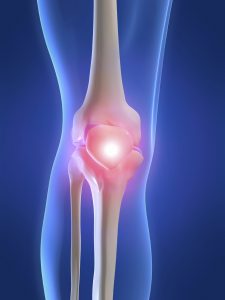Brian Schiff’s Blog
Injury Prevention, Sports Rehab & Performance Training Expert
If you follow my blog, then you already know I have a 16 y/o left-handed son who pitches. As a sophomore, he is in the early stages of recruiting and has been to 3-4 showcase camps. He has good size at 6’3″ tall and 184 pounds. He has been up to 82 mph.

We have been told he projects at the D1 level, but he just needs to throw a little harder. Baseball is all about bigger, faster and stronger these days. Analytics and numbers rule the day. Coaches have told us that once he consistently throws 85 plus, the offers will start to roll in.
So, the big push for many pitchers today is gaining velo. There are lots of programs and “experts” on the subject offering online programs, weighted balls, velocity training tools, throwing programs, etc. The two questions I always have are:
- What is safe for throwing athletes?
- What is effective?
As a physical therapist, I only want to pursue things that satisfy both questions above. Personally, I do not believe there is a quick fix, or any one program that will deliver the goods.
Knee pain is prevalent among adolescents and active adults. Patellofemoral pain and osteoarthritis are the most likely causes of pain. It may be present with squatting, lunging, prolonged sitting, kneeling, running, jumping or twisting.

Research seems to support a combination of hip and knee strengthening as a primary line of defense and treatment for knee pain. Interestingly, males with PFP do not seem to have weakness in the gluteus medusa like their female counterparts. The link below is an abstract that speaks to this difference between the two groups:
https://www.ncbi.nlm.nih.gov/pubmed/30090674
Other modalities used to address anterior knee pain include patellar bracing/taping, blood flow restriction training, dry needling/acupuncture and soft tissue work seems to bring more questions accordion to some experts.
Click here to read the 2018 Consensus statement on exercise therapy and physical interventions (orthoses, taping and manual therapy) to treat patellofemoral pain from the 5th International Patellofemoral Pain Research Retreat.
Clinically, I have seen good results with the following:
1. Activity modification
2. Glute and quadriceps strengthening
3. Blood flow restriction (BFR) training
4. Sequential and progressive loading based on pain response
In the majority of patients I see with knee pain or knee dysfunction, I uncover gluteal weakness and poor proximal muscular stability. This can cascade into overpronation, vagus collapse, poor balance, and any number of kinetic chain issues. While this may not be a big deal for sedentary individuals, it becomes a very big deal for athletes and those performing repetitive loading.
When searching for the best exercises to selectively strengthen the gluteal muscles, it is always wise to see what science has to say. More is not always better. I am all for efficiency and finding the most effective exercises in activating the glute over the tensor fascia lata (TFL). In this post, I am sharing a good exercise to do just that. Prior research has indicated that sidestepping and clamshells are very effective in doing just this. Click here to read a prior post on this.
The video below will walk you through his to do the running man exercise.
Click here to read my PFP column on this exercise.
Improving proximal hip stability and reducing frontal plane collapse is critical for protecting the knee. Poor frontal plane control often contributes to anterior knee pain, IT band syndrome, shin splints, plantar fasciitis and other injuries. This exercise is an advance progression of the standing pallof press, and it is very effective for enhancing single leg strength as well as hip/core stability.
Click here to read my full column on this exercise in PFP Magazine.
I find that many patients and clients lack dynamic shoulder and pillar stability. Assessing this with tall plank arm taps or tall plank Y reaches can tell you a lot about one’s ability to stabilize and resist gravity in single arm support. In light of the insufficiencies I see, I prefer to use exercises that encourage integrated shoulder, torso and hip stability.
Improving shoulder and torso stability is important for overhead athletes, wrestlers, MMA competitors as well as those with any shoulder instability. This exercise is a great way to build dynamic stability and postural stability.
Click here to read my entire online column for PFP Magazine on this exercise including progressions and regressions. I think you will find this movement both challenging and rewarding for you or your clients.

